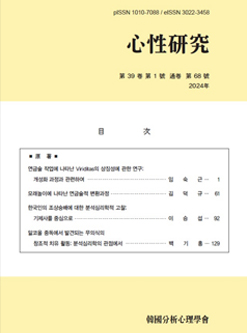조원덕 Won-duck Cho
DOI:10.23151/simseong.2025.40.1.001 Vol.40(No.1) 1-54, 2025
Abstract
This thesis originated from a dream of the Woldae well and a profound emo�tional experience previously encountered at the Jeonjeon. The Jeongjeon is a shrine where the spirit tablets of kings and queens are enshrined. The grandeur of the Jeongjeon contrasted with the emptiness of the Woldae creates a spatial tension that evokes Laozi’s ‘to be’ and ‘not to be.’ Jung also presupposes oppo�sites. This study explores the symbolic meaning of the Jeongjeon in analytical psychology, drawing on Laozi’s philosopy.
As a result, the focus on the relationship between existence and non-existence in the Jeongjeon and Woldae was expanded to the tangible material and intangi�ble immaterial ritual. These themes converge on the idea of relatedness, symbol�ized by the number 15 and the long length and horizontality. The Jeongjeon is the embodiment of the concept of relatedness. The number of spirit chambers undergoes a change from 7 to 11, 15 and then culminates in 19, symbolizing wholness. This symbolism reflects on the path to God through the color transi�tion of the yellow of the spirit chamber following the red of the pillars and spa�tial transition where the spirit tablets expanded into the spirit chamber and then into the Jeongjeon. The Jeongjeon based on Confucianism become the body of God, where the feminine and the masculine are united. The intensity I felt was a manifestation of the Numinose, revealing the feminine in the unconscious and its integration into wholeness.
Key Words
정전과 월대, 유교와 노자사상, 관계성, 전체성, Jeongjeon and Woldae, Confucianism and Laozi’s philosophy, Relatedness, Wholeness






